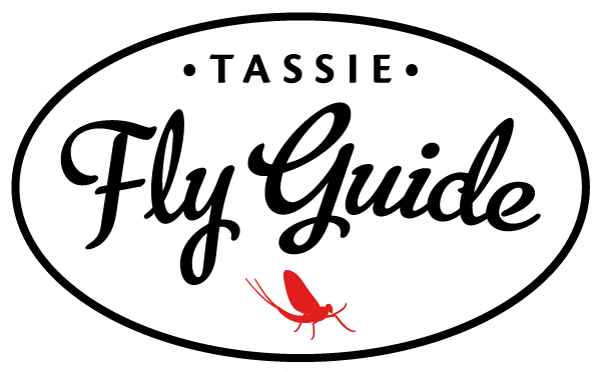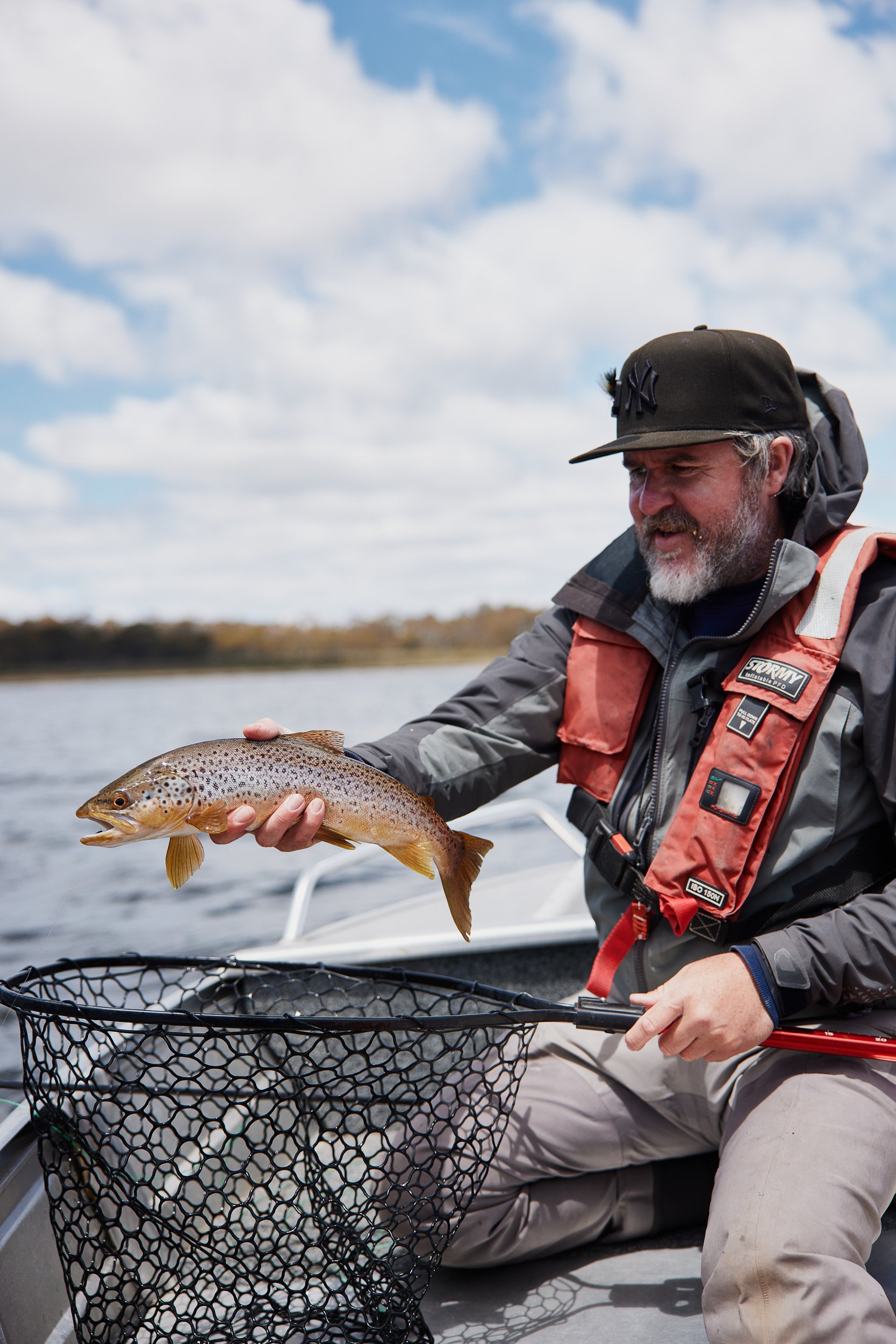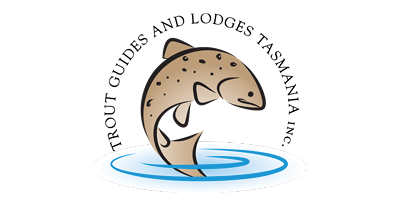“I can’t help but wonder if fishing the highlands in the cold is worthwhile.”

















It’s the shortest day of the year, and Hobart’s Winter Feast is in full swing. As hordes of red-capped revellers strip off for the annual Nude Solstice Swim in the Derwent, my photographer mate, Sam, who is always keen to fish no matter the weather, and I rug up and head to yingina/Great Lake to wet a line in winter. The off-season trout cravings are hitting hard, and I can’t help but wonder if fishing the highlands in the cold is worthwhile.
As we climb our way ‘up top’, the jagged snow gums glisten in the early morning light as the sun struggles to break through the mist — a welcome sight to anglers ascending the Central Plateau. At 1,034 metres above sea level, the winters here are renowned for heavy snowfall and winds that could cut through steel.
A quick roadside pitstop reveals very little wind (amazing), and the temperature is a balmy two degrees — practically tropical! A big wedge-tailed eagle sits above us, surveying the ground for breakfast. We clamber back into the ute, turn the heater up, and push on to Miena.
To maximise fishing time with limited daylight hours, I enlist the help of Jason Garrett (Jnr) of Miena Village Guiding. He’s a Central Highlands guide with over 40 years of fly fishing experience, having represented and captained Australia in international competitions — we are in good hands. Jason welcomes us at the Great Lake General Store. I scoff down an egg n bacon muffin and a coffee to warm the cockles as we discuss the day ahead.
Tods Corner power station is always a welcome sight.
Jason suggests putting the boat in at Tods Corner, the southeast bay of Great Lake. He is (fairly) confident that the boat ramp has enough water to launch his 5.4 metre purpose-built aluminium guide boat. However, the lake’s water level suffers from months without rain and extensive drawdowns to generate hydroelectricity — fingers crossed.
As we drive back past Shannon Lagoon, the orange guideposts glow iridescently as the sun struggles to conquer the fog. The morning wallabies stare quizzically as if to say, what the hell are you idiots doing up here? The bumpy track soon reveals the power station — unsurprisingly, Tods is devoid of anglers. The frosty dolerite landscape looks stunning in the morning light, exactly how I imagine a distant alien world.
The boat ramp is more like a runway, with barely any concrete making it into the water. After several attempts and nearly drowning Jason’s ute (no snorkel), we finally manage to get the boat in the water. We make our way to the western shore slowly, avoiding the many submerged trees desperate to upend any boat at speed with their water-logged branches.
The first drift begins twenty-odd feet offshore, using a drogue to hold the boat at a gentle pace. The wind is south-easterly, not perfect, but workable. Ideally, you want the wind behind you, blowing the boat back onto the shore.
“The boat ramp is more like a runway, with barely any concrete making it into the water.”
Jason has rigged up a Sage X and an Orvis Helios in 10-foot 6-weights, with an Airflo type three sweep and type five sinking line, respectively, and a team of three wet flies. The longer rods are an essential tool for loch-style fishing. The extra length makes casting three beaded wet flies so much easier. I commence by alternating casts from close inshore to further afield, covering as much water as possible. The water depth varies from six to ten feet.
I like to let the team of flies sink lower into the water column at first, varying my count from 15 to 20 seconds before beginning a moderately paced figure-eight strip, pause, one hard strip, and repeat. After a while, I’ll vary the sink countdown and retrieval speeds to incite a take. Don’t forget ‘the hang’ once the flies are close to the boat.
Lift the rod vertically without drawing the flies from the water, and pause. This motion surges the flies up to the sub-surface, and trout often smash them at the last second.
I keep my casts short, between 20 and 30 feet from the boat, with a wind-assisted drift. Shorter casts save your arm from aching and avoid a big belly forming in the line as you retrieve. Strikes and hook-ups are generally within 20 feet of the boat. That being said, mid-winter trout are possibly more occupied with procreation than food, so the approach might annoy them into eating a fly.
Great Lake’s epic beauty is only matched by its size.
We spend the morning drifting the edges of Tods, gradually moving into deeper water. It is a quiet start, with only a few non-committal taps from fish near random weed beds. As my feet turn to ice blocks, Jason fires up the motor and heads across the bay to a likely-looking outpost. Three wedgies circle high above the trees as we usher the boat into position, parallel to the rocky shore.
Not long into the first drift, Jason’s rod bends over, hooking and boating a brightly coloured rainbow bearing the scars of a battle fought and won with a cormorant. Jason says rainbows are worth one point and brownies two, with a bonus point if you catch either on a dry (not that we try) — one point for Jason.
The first fish fills me with confidence, and a little burst of sunlight gets the blood flowing again. For a brief moment, I can actually feel my toes. Repeating the same drift back towards the shore multiple times, I manage a few taps but no committed fish. The gentle wind shepherds us towards a cluster of long-dead trees on the point. This spot feels very fishy, and just as my line pulls tight, a golden winter brownie is soon at hand — fooled by an orange-beaded Shrek on the point — two points to me!
A magnificent 360-degree rainbow across the sky beckons us toward the western shore again, and after a tasty lunch and much-needed hot coffee, it is time to try our luck under the organ pipe rock ridge jutting up from the shore. Pulling the boat in so Sam can climb up on the ledge — a great-looking spot for a photo op — he calls out, no pressure!
I throw a couple of casts into the deeper water, and surprisingly, on my second retrieve, a solid thump reverberates through the rod — I am on! A hook-up rarely happens in front of the camera. Don’t stuff it up, I think.
The fish dives, strips off line, and heads behind the boat, dangerously close to the prop. Dropping the rod tip, I manage to steer the fish back to the starboard side, away from tangles. Jason plunges the net into the water in his first attempt of many to land the fish. As I gain some line on the reel, feeling confident, off he goes again, diving deeper and heading for the bow again — desperate to bust me off. This fish knows the drill!
Respect – a worthy fight and a quick release.
We keep this dance up for another five or six minutes, and the fish’s size increases incrementally in my imagination as the seconds tick by. Finally, the gallant battle is over as Jason scoops the fish up gently onto the casting deck. It’s a brownie; two more points to me! We perform the obligatory handshake as Sam calls out. ‘I got all that! It looks fantastic from up here.’ The fish is gorgeous, deep, golden, around three-and-a-half pounds. Well, there are good fish to be had in winter; you just have to persist!
As the temperature plummets, the evening fog begins to set in. Another entanglement with the boat ramp ensues. At this stage of the day, I can’t feel my fingers — nothing an icy cold beer wouldn’t fix, I think. We retreat to the Great Lake Hotel and defrost in front of the fire, then tuck into a hearty pub meal, swapping fishing stories and planning the next trip — a wonderful way to finish the day.
The great thing about fishing over winter is the crisp air, which keeps all your senses heightened. It’s difficult to daydream or be distracted when your limbs vibrate to stay warm, keeping your attention focused on casting technique and retrieve speed. I found this to be oddly satisfying throughout the day, despite the cold.
Let’s not forget that shore-based fishing is still an excellent option in the winter, too. Just don’t scrimp on the quality of your thermals — Merino wool is highly recommended, and multiple layers are mandatory. Stick with an intermediate sinking line and two flies, and wander the shore, knee to waist-deep, varying your sink depth until you find where the fish are. You don’t need to wade far to find a hungry post-spawning brown trout, eager for a meal.
“Drifting in a boat or wandering the shore at Tods Corner is an idyllic way to scratch the winter fishing itch …”
Drifting in a boat or wandering the shore at Tods Corner is an idyllic way to scratch the winter fishing itch. Is it cold? Yes. Is it beautiful? Yes. Is it worth fishing in winter? Abso-bloody-lutely! As they say, there’s no bad weather, just bad clothing.
To experience winter fishing at Great Lake, head to the highlands or contact Jason Garrett at
mienavillageguiding.com.au.
As published in FlyLife magazine #119, Winter 2025.
Tight lines! 🎣
Marcus








































